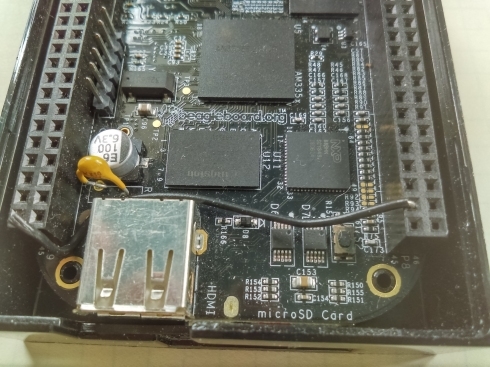Tool/software: TI-RTOS
Hello,
I am trying to boot a SYS Bios application without holding the S2 button on my beaglebone black. I am already able to create a bootable SD card for my beaglebone black to execute sys bios applications with my script (you can see below) for creating the "App" file and the "MLO" file from path "C:\ti\processor_sdk_rtos_am335x_4_02_00_09\prebuilt-sdcards\evmAM335x\sd_card_files\MLO", but the beaglebone always wants to boot from emmc first because of the hardware design. Many forums describe something with uboot but I don't know what I need to change. Another suggestion which I tried was to delete the emmc. I did that by connecting the beaglebone via usb, logging in via ssh and executing "dd if=/dev/zero of=/dev/mmcblk0 bs=1M count=1". The outcome was, that I still had to hold the user button because when I don't do that now, the beaglebone is doing nothing except of permnanently illuminating user led0 and user led1 because it is not able to boot into linux anymore I think. Do you have any ideas except of changing the hardware to hold the S2 button permanently to high? I really don't need to have linux at all anywhere on the flash. I just want to always boot my sys bios application on startup. If you do have a solution by flashing it directly to emmc via JTAG, that would be ok as well.
script:
set PDK_PATH=C:/ti/pdk_am335x_1_0_9/packages
set CG_TOOL_PATH=C:/ti/gcc-arm-none-eabi-6-2017-q1-update
set APP_NAME=AppName
%CG_TOOL_PATH%/bin/arm-none-eabi-objcopy -O binary %APP_NAME%.out %APP_NAME%.bin
%PDK_PATH%/ti/starterware/tools/ti_image/tiimage.exe 0x80000000 NONE %APP_NAME%.bin app
beaglebone hardware design (without holding s2 user button MMC1 is booted first, which should be emmc/linux):
regards,
David



